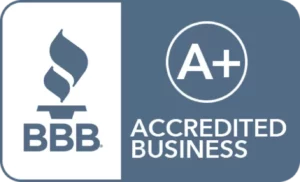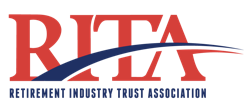What is a Solo 401(k) Plan?
A Solo 401(k) plan is a 401(k) qualified retirement plan that was designed for self-employed individuals and small business owners with no full-time employees, excluding a business partner and spouse. Much like the traditional 401(k), this unique plan encourages individuals to save for retirement in a tax-advantaged environment. When participants contribute funds into the Solo 401(k), taxes on the funds will be deferred until the participant takes a qualified distribution.
The Solo 401(k) is an IRS-approved plan that has the same rules and requirements as a traditional employer-sponsored 401(k). However, the Solo 401(k) allows participants to make annual contributions to the plan as both an employee and employer, which ultimately increases the yearly maximum contribution limit.
Also known as a self-employed 401(k) or individual 401(k), individuals can benefit even if they generate a portion of their total income through self-employment activities, such as a freelance gig.
What are the Benefits of the Solo 401(k) Plan?
The Solo 401(k) plan provides many benefits to individuals who are eligible for the plan, including the ability to make higher contributions. For example, the total annual contribution for a Solo 401(k) is $66,000 for participants who are under 50. Participant who are age 50 and over can contribute up to $73,500 to the plan in 2023. This is because the Solo 401(k) has two types of contributions:
- Employee salary deferral contribution: Employees can contribute up to $22,500
- Employer profit-sharing contribution: The annual limit is 25% of the employee’s pay, or 20% if you’re self-employed
Catch-up contributions allow individuals age 50 and older to contribute up to $73,500 to the plan.
Additional benefits of the Solo 401(k) plan include:
- $50,000 tax and penalty-free loan (or 50% of account value, whichever is less) to be used for any purpose.
- Ability to make alternative investments, such as real estate and traditional investments, such as stocks.
- No need to establish a Limited Liability Company (LLC) to make investments, which can be costly.
- Exemption from UBTI tax when using leverage for real estate investments.
- Stronger creditor protection than individual retirement accounts (IRAs).
- Not subject to ERISA rules, as the business of the Solo 401k holder does not have employees.
- Cost-effective and easy administration.
Why not Use an Individual Retirement Account (IRA)?
The Solo 401(k) is an IRS approved retirement plan that was specifically designed for self-employed individuals and small business owners with no full-time employees other than themselves, a business partner and perhaps their spouse. There are more advantages of establishing a Solo 401k over an IRA.
Other benefits of the Solo 401(k) vs a Traditional IRA include:
- Tax-Free Loan Option: Borrow up to $50,000 or 50% of your account value (whichever is less) to use for any purpose.
- Easy Administration: There is no annual tax filing or information returns for a plan that does not exceed $250,000 in assets.
- No need to establish an LLC: LLCs can be costly, especially depending on which state you live in. With a Solo 401(k), the trustee (you) can make investments without the need of an LLC.
- Strong Creditor Protection: Most states offer better creditor protection for this retirement plan than a Traditional IRA. Additionally, Individual 401(k) Plan assets are protected against creditor attack in a bankruptcy proceeding.
- Roth After-Tax Benefit: You have two formats with a Solo 401(k): pretax, or Roth (after-tax). With a Traditional IRA, you only have the option of pretax. With the Roth option, your money can grow in its retirement account tax-free. And of course, when you withdraw at retirement, you pay no additional taxes.
- Non-recourse Leverage Exception: You can invest in your own business and real estate investments without penalty. By using non-recourse funds, you won’t trigger the Unrelated Debt Financed Income Rules and the Unrelated Business Taxable Income (UBTI and UBIT). This exception doesn’t apply to IRAs.
How Much Can I Contribute to My Solo 401(k) in 2023?
Annual contributions as an employee to the Solo 401(k) plan in 2023 cannot exceed $22,500 for participants under age 50 and $30,000 if 50 and older. Contributions made as an employee is known as the “elective deferral.”
As an employee of a self-employed business or small business with no full-time employees (other than an owner or a spouse), you have the option to make the Employee Contribution. This is also known as the Elective Deferral. For 2023, the Solo 401(k) maximum contribution limit for the elective deferral is $22,500 if you’re 50 and under. Whereas, the elective deferral contribution if you’re 50 and older is $30,000. Employee deferral contributions can be made in pretax or Roth.
If you’re under 50, you can also benefit from the plan on the profit sharing side – your business can make a 25% contribution. In other words, you can take out 25% of your business’ profits and place it into your Solo 401(k). In the case of a sole proprietorship or single member LLC, it’s a maximum 20% profit sharing contribution of $66,000 in 2023. If you are at least age 50, it’s $73,500.
A Solo 401(k) Plan Gives You More Options
One of the many benefits of using a Solo 401(k) is that you grow your retirement account by diversifying your investments. The Solo 401(k) retirement plan investments are similar to investments you can make with a self-directed IRA. Step away from traditional investments and spend your money on new opportunities. This can include real estate, tax liens, raw land, rentals, foreclosures, etc. This is possible if you choose a Self-Directed Solo 401(k) Plan.
All income and gains on these investments go back to your Individual 401(k) Plan tax-free. As trustee, you have full control to make any investment you want without custodian consent.
Are contribution options flexible? Absolutely. You can make contributions for any purpose. You also have the option to invest as much as legally possible, reduce, or suspend investments. Basically, you can make contributions but there’s no requirement to do so.
Cheap and Easy Administration
People find the Solo 401(k) more attractive because of how easy it is to manage. Unless it is higher than $250,000 in assets, there are no filing requirements. If it does exceed that amount, then you must file Form 5500-EZ. This is a short information form that you to send to the IRS. If you wanted to, you could establish a Solo 401(k) at a traditional financial group, such as Vanguard. However, you don’t receive the same flexibility as if choosing IRA Financial’s Solo 401(k) Plan, or a plan from another self-directed IRA company.
The benefits of IRA Financial’s Solo 401(k) Plan vs Vanguard’s Solo 401(k) Plan are noteworthy:
- IRA Financial’s Individual 401(k) Plan allows for the conversion of a traditional 401(k) or 403(b) account to a Roth – such is not the case with Vanguard
- Vanguard offers no loan feature, whereas we allow you to borrow up to $50,000 or 50% (whichever is less) from your IRA account
- At Vanguard, you have no checkbook control, therefore, you’re restricted to traditional investments
- Your Individual 401(k) Plan account must be opened at Vanguard – at IRA Financial, you can open your account at any local bank











